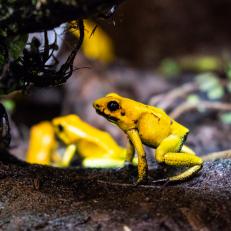500 Bee Species are Thriving in this Small Patch of Arizona Desert
There are about 20,000 species of bee known on earth, and a surprisingly large number of them inhabit the San Bernardino Valley in southern Arizona, along the US-Mexico border.
A world record for bee diversity, here are some of the most unique bees that make this patch of desert their home.
October 19, 2021
By:
Tatum Lenberg
Shop This Look
Green Sweat Bee
Green Sweat Bees, known for their unique color, are named after their attraction to human sweat. They use the salt in sweat for nutrition.





















